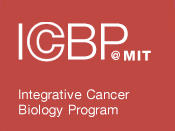| Title | Simultaneous reconstruction of multiple signaling pathways via the prize-collecting steiner forest problem. |
| Publication Type | Journal Article |
| Year of Publication | 2013 |
| Authors | Tuncbag, N, Braunstein, A, Pagnani, A, Huang, S-SC, Chayes, J, Borgs, C, Zecchina, R, Fraenkel, E |
| Journal | J Comput Biol |
| Volume | 20 |
| Issue | 2 |
| Pagination | 124-36 |
| Date Published | 2013 Feb |
| ISSN | 1557-8666 |
| Keywords | Algorithms, Brain Neoplasms, Cell Communication, Gene Expression Profiling, Gene Regulatory Networks, Glioblastoma, Humans, Models, Biological, Neoplasm Proteins, Pharmacogenetics, Pheromones, Protein Interaction Mapping, Receptors, Cell Surface, Saccharomyces cerevisiae, Signal Transduction |
| Abstract | Signaling and regulatory networks are essential for cells to control processes such as growth, differentiation, and response to stimuli. Although many "omic" data sources are available to probe signaling pathways, these data are typically sparse and noisy. Thus, it has been difficult to use these data to discover the cause of the diseases and to propose new therapeutic strategies. We overcome these problems and use "omic" data to reconstruct simultaneously multiple pathways that are altered in a particular condition by solving the prize-collecting Steiner forest problem. To evaluate this approach, we use the well-characterized yeast pheromone response. We then apply the method to human glioblastoma data, searching for a forest of trees, each of which is rooted in a different cell-surface receptor. This approach discovers both overlapping and independent signaling pathways that are enriched in functionally and clinically relevant proteins, which could provide the basis for new therapeutic strategies. Although the algorithm was not provided with any information about the phosphorylation status of receptors, it identifies a small set of clinically relevant receptors among hundreds present in the interactome. |
| DOI | 10.1089/cmb.2012.0092 |
| Alternate Journal | J. Comput. Biol. |
| PubMed ID | 23383998 |
| PubMed Central ID | PMC3576906 |
| Grant List | R01 GM089903 / GM / NIGMS NIH HHS / United States R01GM089903 / GM / NIGMS NIH HHS / United States U54 CA112967 / CA / NCI NIH HHS / United States U54CA112967 / CA / NCI NIH HHS / United States |
